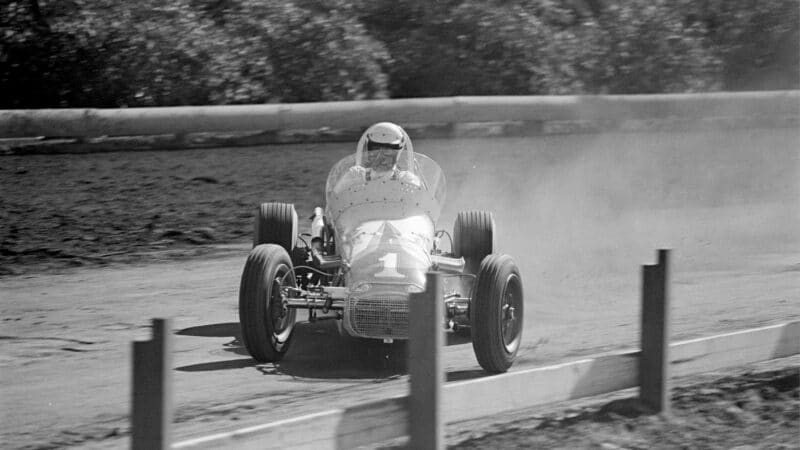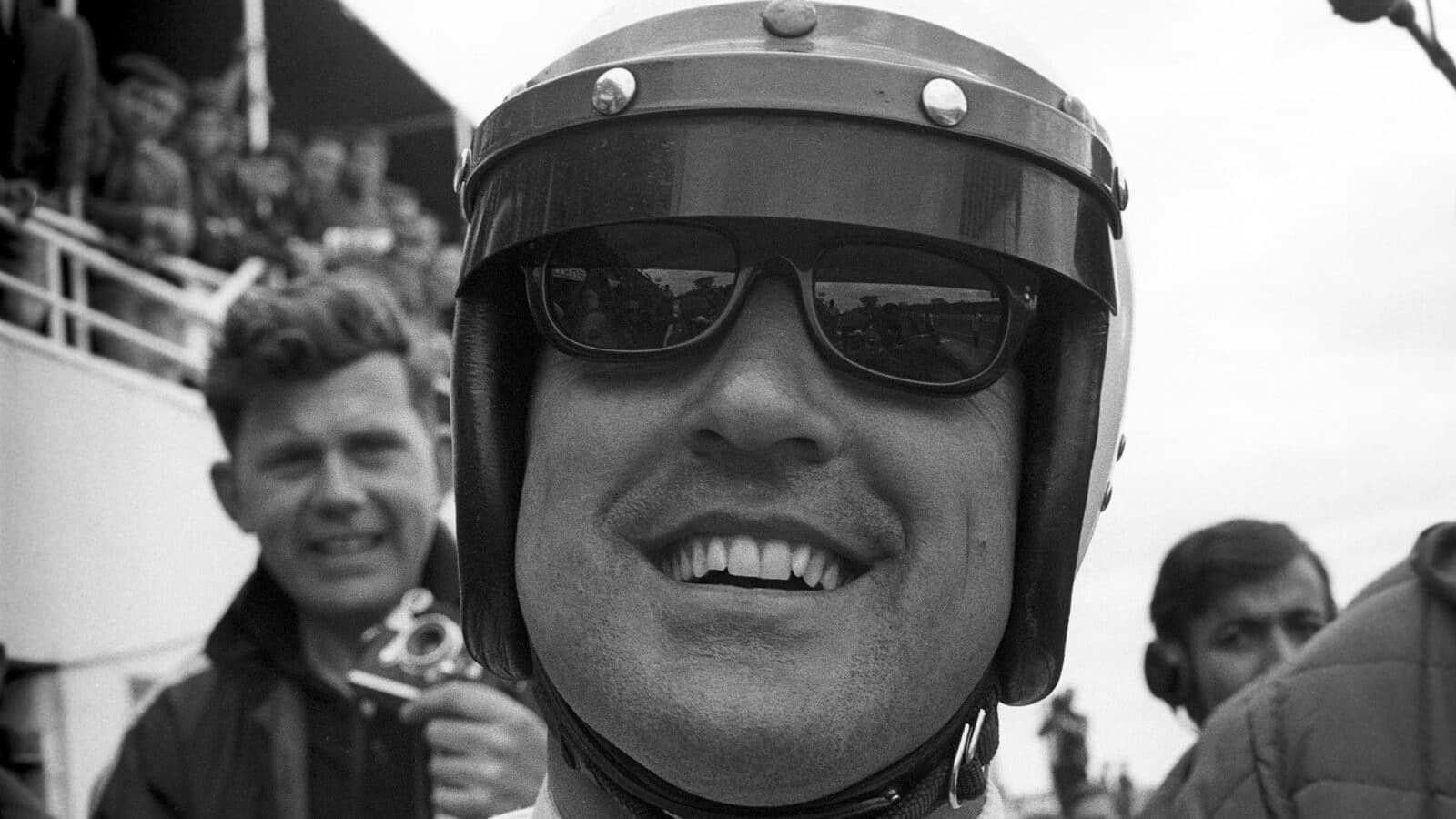Yet more Foyt candle-burning occurred during a weekday evening show at the Indiana State Fairgrounds in Indianapolis, where he was back rampaging in his Ford stocker, racking misery upon his former employer, Dodge. The Ford still wasn’t right – this time it wore out the brakes – but Foyt won anyway. Burn that candle!
The following Sunday, AJ was to be found in the Pennsylvania precincts driving the ‘Horne. Making impossible pass after impossible pass, he was leading the stock car field at the 86-mile mark, but got taken out in a collision. Impatient to resume the campaign in anything available, he spotted the Dodge Hemi of a used-car salesman named ‘Honest John’ meandering in 14th position. Mongering his way into its cockpit by throwing ‘Honest John’ out, Foyt demonstrated why he was AJ Foyt. Eight miles in arrears, he recovered two of them, then recorded the fastest average of the afternoon, as lap after lap he pulled off his trademark outflanking manoeuvre on Langhorne’s outermost fringe, up where the oiled dirt merged against a rampart of dense woods; afterwards he was inconsolable about only finishing third.
Next he returned to the IndyCar tournament and fell to the revitalised Ward in the Hoosier 100. But just six days later Foyt was in New Jersey, unbeatable all over again on Trenton’s paving. Only then did he temporarily rest from his 20 candle-burning days – though not for long: he took John Mecom’s Scarab to the Bahamas and ambushed the road-racing lads at Nassau’s speedweek.
Continuing the same breakaway pace in 1964, he won an impossible 10 of 13 IndyCar shows in nine months: Phoenix, Trenton, the Indianapolis 500, Milwaukee, Langhorne, Trenton, Springfield, DuQuoin, Indiana Fairgrounds and Sacramento.

Dirt racing at Sacramento in 1965
Getty Images
Just as impressive as his ability to win was the way he continued to live injury-free. Those were very hazardous times. Two of the championship trail’s icons, Eddie Sachs and Bobby Marshman, were killed in fires; Parnelli Jones and Jim Hurtubise were severely burned. AJ alone seemed able to go on leading the ultimate race driver’s charmed life.
Yet at last, he too joined the massed ranks of the damaged. At California’s Riverside Raceway, during a stock car marathon, he was flat out when his Banjo Mathews Ford blew out its brakes at the end of Turn 9 and plunged to the floor of a canyon. Foyt’s injuries included a broken back, damaged aorta, fractured heel and general trauma. Just 10 weeks later, hurting from top to bottom, he arrived at Phoenix International Raceway for the IndyCar 150: he won pole position. In the race, however, mechanical ills put him out. AJ had little success at other 1965 meets and, for a change, he lost the national championship to someone almost as exciting to watch as himself: Mario Andretti.
Actually, that season was all about change; US racing would never be the same again. The influence of Colin Chapman and Jim Clark, with their rear-engined Lotus-Fords, was everywhere, as if they had been witch doctors bringing their medicine to primitive people. Adieu, Offy roadsters! Goodyear and Firestone, the two rubber giants, were going back and forth in a bitter tyre war. The dirt tracks, for half a century the backbone of championship conflict, were being disenfranchised and the road courses accredited. Suddenly anything seemed possible, including Mario — fresh off the wild midget car bowls — being the first to try to plug into the same mystique that had created Foyt.










